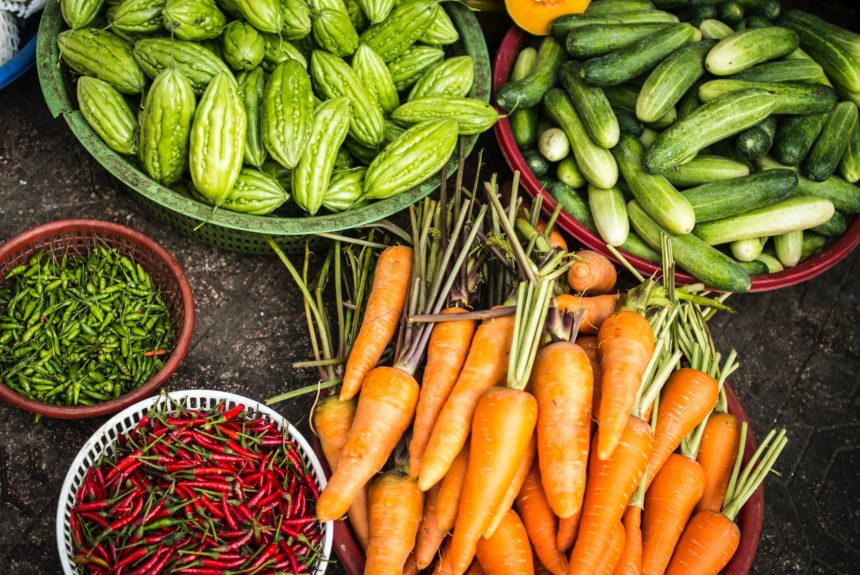Reducing food waste is a critical step in meeting our climate needs. According to nonprofit group Project Drawdown, 8% of global greenhouse gas emissions stem from producing food that is either wasted or lost. Even worse, roughly one-third of farmland is used to grow food that is never eaten. By keeping perfectly usable ingredients from the landfill and altering them into “upcycled” products, consumers can put an end to unnecessary food waste and help curb global greenhouse gas (GHG) emissions.
So, what is “upcycled food?”
The term comes from the transformative process of turning food waste into ingredients for new and nutritious products. Food is wasted or thrown out at several stages in the food supply chain for many reasons. For example, millions of pounds of fruits and vegetables never make it to store shelves. That’s because grocery stores reject “sub-grade” produce from manufacturers for simply looking a little different. Consumers spurn food based on bruises or imperfect coloring, contributing to the harsh beauty standards that major retailers who sell produce must abide by. Once at home, food can go bad when people buy too much or simply over-serve themselves. Similarly, ordering and serving too much in restaurants contributes to the food waste that dominates higher-income economies.
The upcycling foods movement aims to recover ingredients before they permanently exit the human food supply chain. Food that is ‘diverted’ from the compost or landfill is then transformed for human consumption. According to the nonprofit Upcycled Food Association, “Upcycled foods use ingredients that otherwise would not have gone to human consumption, are procured and produced using verifiable supply chains, and have a positive impact on the environment.”
An official definition was created last year by a task force composed of industry leaders, government officials, intellectuals, and activists.
Upcycling differs from traditional waste management strategies in that it works earlier in the food system to salvage and repurpose food. Typically, wasted food ends in one of ten “end-of-life destinations,” like the incinerator, animal feed, or landfill. The upcycled foods sector aims to divert these valuable raw materials from their traditional end-of-life destinations and use them to create new foodstuffs.
While upcycling transforms waste items into entirely edible ingredients, upcycling differs from “recycling” because ingredients are not just reused but elevated for a more valuable purpose. For example, spent grains and avocado seeds can be reintroduced into the market as juices or chips. Similarly, safe-to-consume byproducts like soybean and oat pulp can generate organic okara flour. To be considered ‘upcycled,’ items must be altered into new or more complex products and the diverted ingredients must undergo a value-added process.
Another feature of upcycled foods is that upcycled foods specifically refers to foods fit for human consumption. For example, some upcycled ingredients may be safe for human consumption on their own before any processing and repurposing into a final product. But others, like eggshells and banana peels, require a transformative process of upcycling to reenter the human food supply chain.
Per the official definition, upcycled foods must also have an auditable supply chain. The entire point of the upcycled foods movement is to reduce food loss and waste, so naturally, upcycled foods must have a traceable origin for verification purposes. Ensuring transparency and auditability across the supply chain establishes consumer trust in the Upcycled Foods label. In addition to establishing trust in the brand, auditable supply chains can prove whether upcycled food products are helping to mitigate food waste and help the environment. If neutral third-party groups can confirm ingredients are removed from a food waste destination, scientists and researchers can attest to their benefits.
Finally, upcycled foods indicate which ingredients are upcycled on their labels. Proper labeling informs consumers about which portions of the product are upcycled and avoids confusion by the public. Adequate disclosure of upcycled ingredients also serves to ensure product claims are not misleading.
So, what are some examples of upcycled foods? Over 400 products already exist in the market, but there’s no label to identify them (yet), so consumers don’t know which ones they are. Here are some staples:
- Candid’s Noons, a new brand of chocolate that uses the whole cacao pod–seed and fruit.
- RISE Super Flour, an innovative flour crafted from brewer’s spent grain.
- Rubies in the Rubble Mayo, a mayo made with aquafaba, the plant-based liquid leftover from chickpeas that would normally be discarded.
- Imperfect Foods, a one-stop grocery shop for sustainable produce that didn’t make it to store shelves.
- Coffee Cherry, a functional flour made using coffee cherry pulp, the byproduct of green coffee beans.
- Barnana Banana Bites, bite-sized snacks using imperfect bananas.
- Pulp Chips, grain-free chips made with upcycled veggies.
Globally, food loss and waste accounts for almost one trillion dollars in annual economic loss. By producing more food with fewer resources, upcycled foods ensure that land and other valuable inputs like water and human capital are not squandered. Moreover, upcycled foods ensure that we can meet future food demand without putting additional pressure on the environment. Not only are upcycled foods a great way to reduce greenhouse gas emissions from the environment—an estimated 70 million tons of GHGs could be cut by upcycling—the movement is ripe with economic opportunity and entrepreneurial zeal. Expect this trend to stay.
Nathalie Voit is a freelance content creator and a graduate of the University of Florida. She is an alumni of The Heritage Foundation’s Young Leaders Program.
The views and opinions expressed are those of the author’s and do not necessarily reflect the official policy or position of C3.
